Javelin is an anti-tank guided missile that can be carried and launched by a single person, in service with the British Army, the Royal Marines and RAF Regiment.
Javelin is a portable Anti-Tank Guided Weapon (ATGW) described by the British Army thus;
Javelin, the medium range anti-tank guided weapon replacement for Milan, is an enhanced version of the American weapon proven on operations in Iraq and Afghanistan by US forces.
Javelin ATGW is in service with the British Army, Royal Marines and RAF Regiment.

Javelin Anti-Tank Guided Weapon (ATGW) History
Javelin is a direct replacement for the Milan Anti-Tank Guided Weapon
Milan ATGW
In 1972, Daimler-Benz Aerospace (DASA) and Aérospatiale SA formed a joint venture called Euromissile, now part of MBDA, to develop a man-portable anti-tank guided weapon and heavier vehicle/helicopter mounted weapon.
These two were MILAN (Missile d´infanterie léger antichar) and HOT (Haut subsonique Optiquement Téléguidé Tiré d’un Tube)
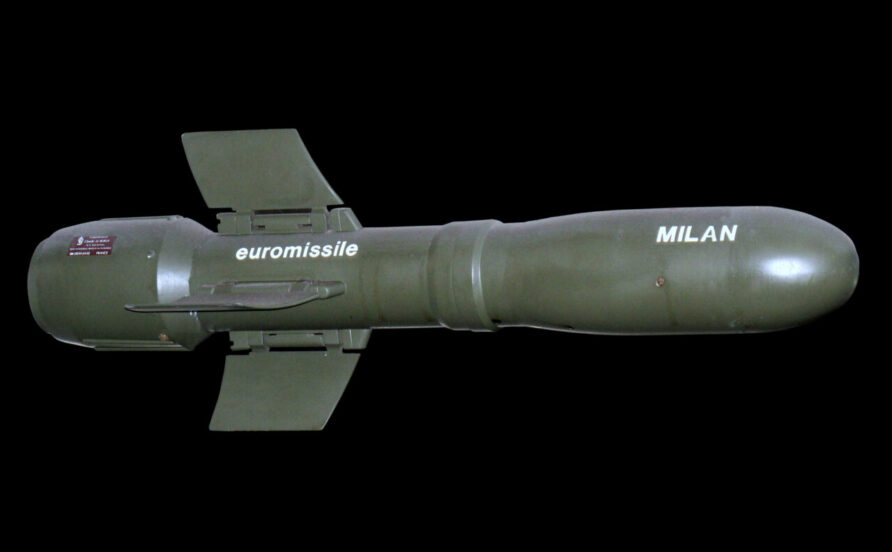
MILAN entered service relatively quickly and soon went on to achieve significant export success, including with the UK and 40 other countries.
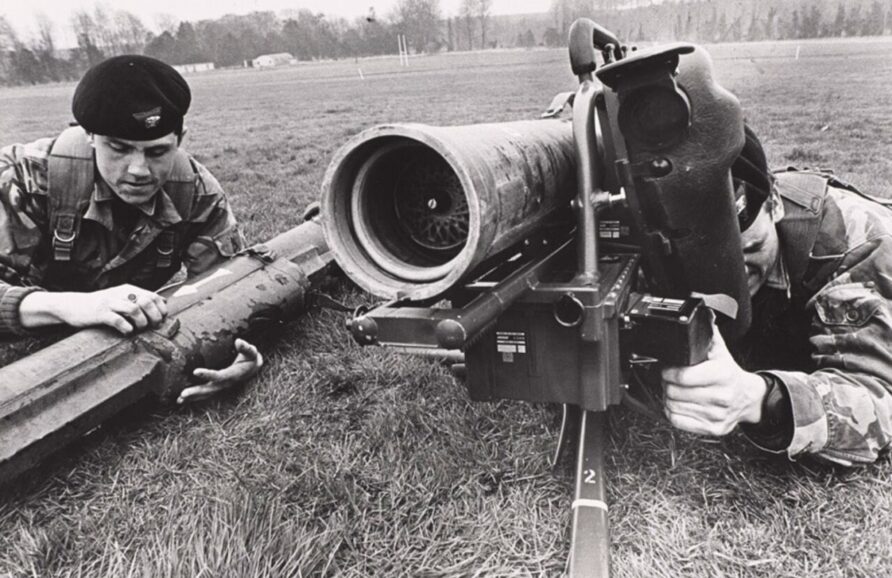
MILAN uses a Semi-Automatic Command Line of Sight (SACLOS) guidance system, with a thin wire used to transmit guidance information from the firing post to the missile.
In British service it saw extensive use in Falklands, from Major John Crossland, OC B Company 2 PARA;
A Milan is an anti-tank weapon, which fires a guided missile with a very substantial warhead over a range of 2,000 metres. I thought, if we can bust them with the Milan, we can probably get round their flank, get down to Darwin, knock that off and then worry about Goose Green. The Milan was an unorthodox choice, but it was the only powerful weapon we had. Much to our relief, the first round fired was a perfect bull’s eye. It went straight through the bunker window and blew it out completely, and the second one did the same. Four more rounds and that was Boca House cleared out.
Everyone stood on their feet and cheered!
Milan 2 came into service in 1984, the two are easily distinguished by Milan 2 having a distinctive stand-off probe.
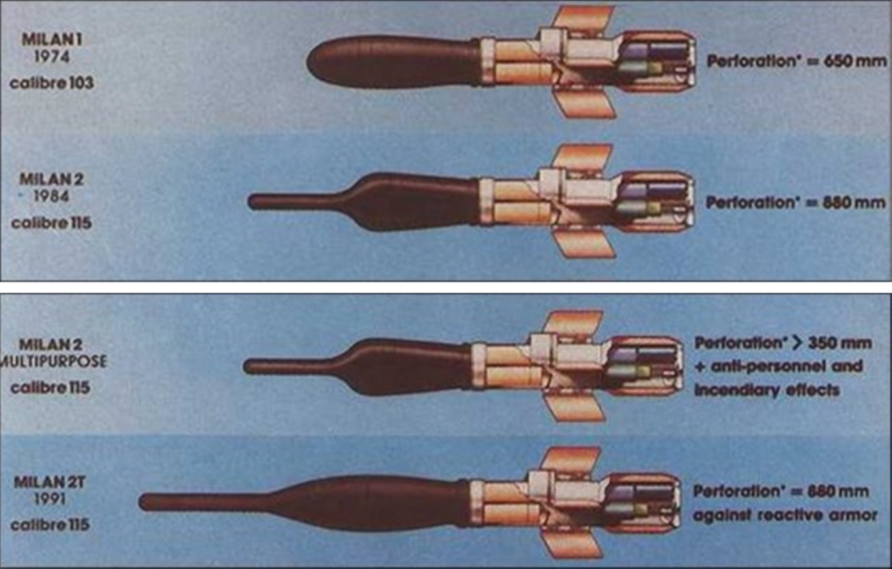
In 1984, it was revealed in a Parliamentary Answer that the cost of Milan was £7,500 per missile, or £22,000 equivalent price today.
By the mid-eighties, thoughts of replacement were beginning to form, the long saga ending with the introduction of the Javelin ATGW in 2005, despite Milan having its last outing with the British Army in Afghanistan in 2006
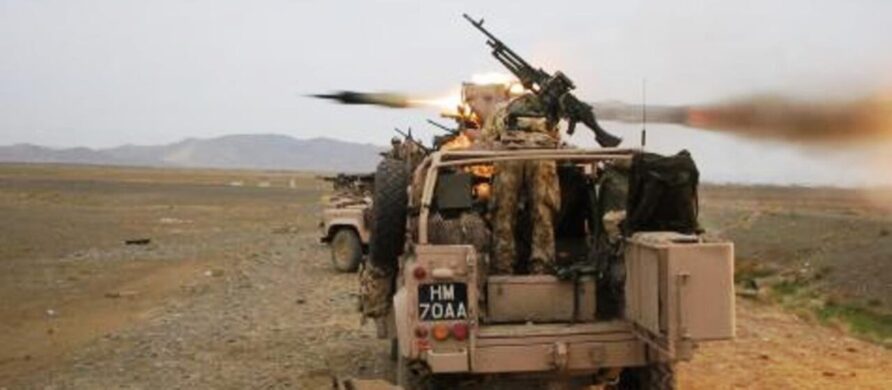
TRIGAT-MR
TRIGAT began in 1983 with the agreement of France, Germany, and the UK to establish the Euromissile Dynamics Group to develop a number of anti-tank guided weapons.
In 1988, the UK, France and Germany signed a Memorandum of Understanding (MoU) to cooperate on the joint development of an anti-tank missile family (medium and long-range) that would replace Milan, HOT and Swingfire; Euromissile was intended to be the industrial vehicle.
The missiles were to be called TRIGAT- MR and TRIGAT-LR, and both would utilise a tandem shaped-charge warhead and either a laser beam riding or IR homing guidance.
The original intent for the MR variant was that it could use Milan firing posts and sighting systems.
The LR variant was intended to have a range exceeding 5,000m and employ a terminal dive attack profile to target thinner top armour of armoured vehicles.
Development contracts followed, and the missile progressed through early-stage firings.
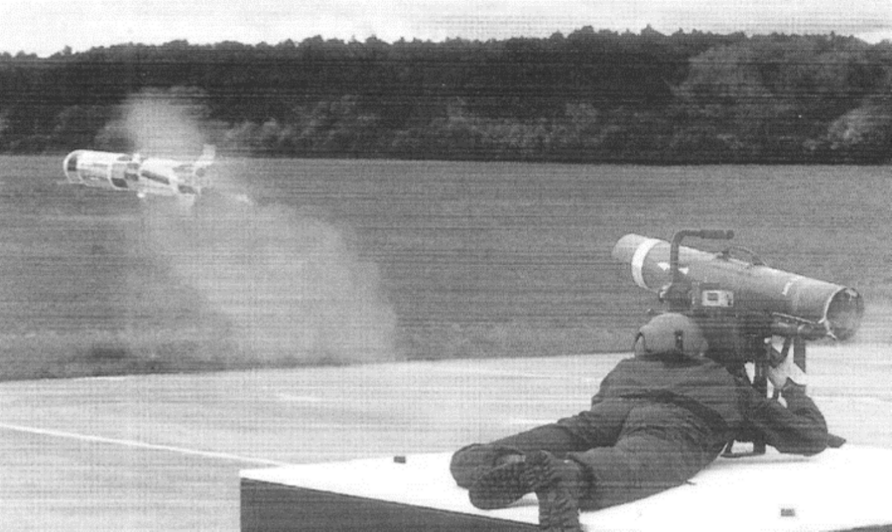
TRIGAT MR used a laser beam guidance system, like Javelin S15, the operator simply placed the beam onto the target and the missile acquired it and followed it in.
A thermal imaging system provided day/night capability, and the missile itself had a maximum range of 2,400m.
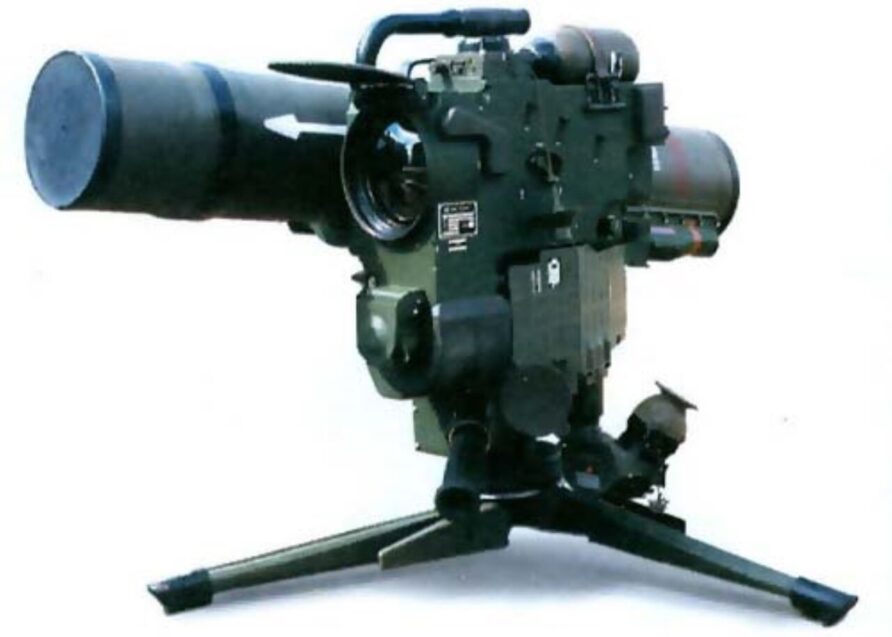
The missile was designed to have a high level of agility for use against fleeting and crossing targets, and with a soft launch system, easy to use in confined spaces.

TRIGAT-LR was closely tied to the development of the Eurocopter Tiger attack helicopter, but as the UK eventually selected the AH-64 over Tiger and A.129 Mangusta, the choice of Hellfire instead of TRIGAT-LR was already made.
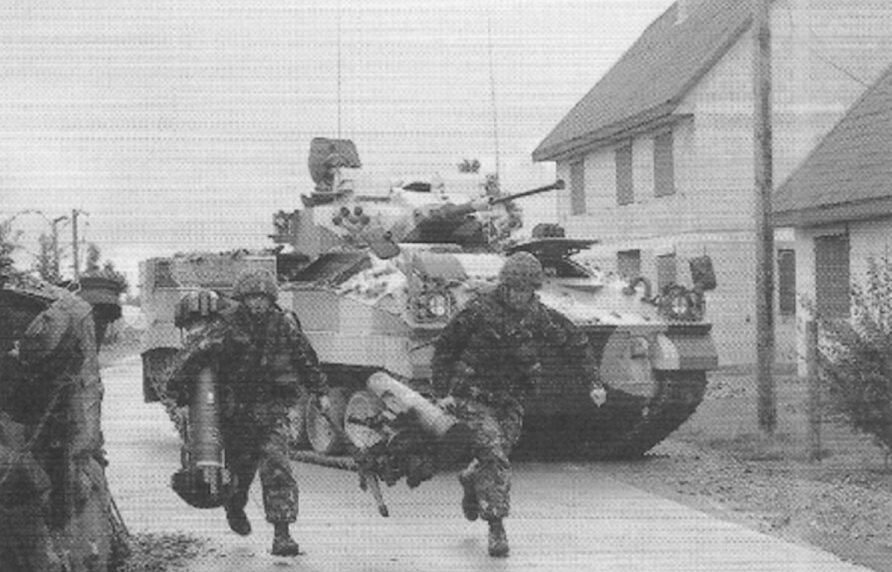
The UK signed an MoU for production in 1999 with the expectation of a contract to follow that ensured no gaps would exist between TRIGAT-MR coming into service and Milan going out of service in 2005.
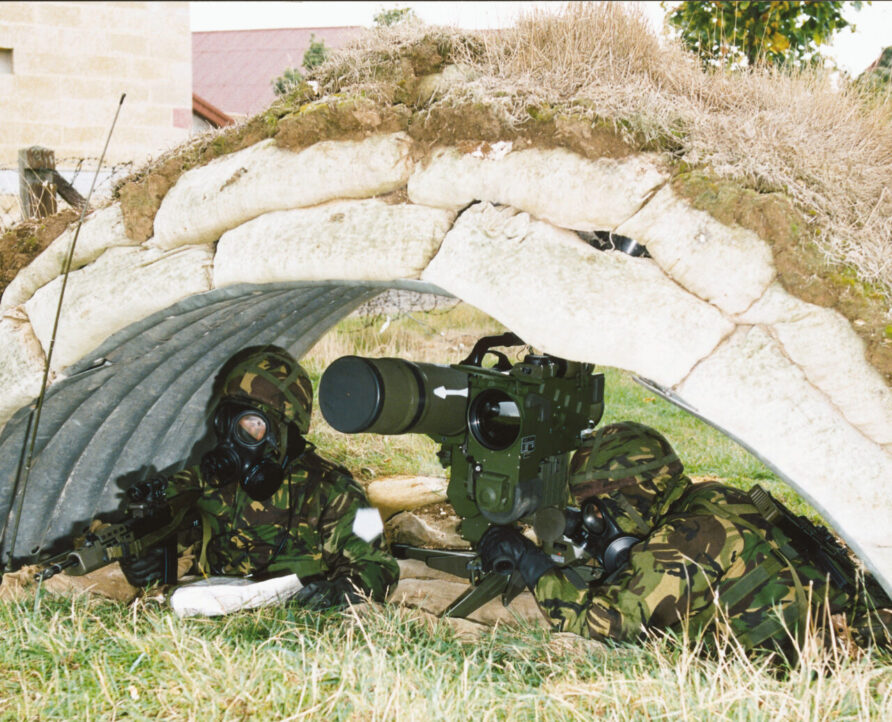
Unfortunately, delays in signing from Belgium and the Netherlands and, as usual, Germany revising down their required quantities, meant the delays would potentially leave the UK with a capability gap.
The 1999 National Audit Office Major Projects Report described TRIGAT as;
Medium Range (MR) TRIGAT is a crew-portable anti-tank guided weapon system, for the infantry and Royal Marines, which will be capable of defeating improved enemy armour at a maximum range of 2400m. It will replace MILAN, and comprises a firing post, a missile and a thermal sight, allowing effective operation at night and in adverse weather conditions. MR TRIGAT is a multi-lateral project with the United Kingdom, France and Germany as Pilot Nations and Belgium and the Netherlands as Associate Nations. It is currently nearing the end of full development.
The cost to the MoD at this stage was forecast to be £122 million.
In September 2000, the Government announced the UK’s withdrawal from TRIGAT
Baroness Symons of Vernham Dean Minister of State (Defence Procurement), Ministry of Defence
The UK signed the Memorandum of Understanding for the industrialisation and production phase of MR TRIGAT in June 1999 in the expectation that we would shortly proceed to contract and maintain the programme to deliver a modern anti-tank guided weapon capability by 2005 (when stocks of the existing MILAN system start to run down).
Regrettably, MOU signature by all five participating nations has still not been achieved. Some 12 months after our MOU commitment we are no nearer to contract placement than we were then. This additional delay, to a programme that is already 10 years behind its original schedule, and the additional risk and uncertainty it creates is unacceptable. The UK’s priority has to be to deliver the capability and equipment needed by our Armed Forces in an acceptable timescale.
We have therefore decided that the UK should withdraw from the MR TRIGAT industrialisation and production programme and will pursue an alternative national procurement of an anti-tank guided weapon system. We plan to issue an invitation to tender in the next few weeks for the supply of commercially available systems to meet the requirements of our infantry light forces by 2005. In parallel, we are reviewing our requirements for an anti-tank capability for mechanised and armoured infantry units prior to determining whether these too could be met by similar commercially available systems. Our initial assessment is that the alternative systems now available will be in many ways more capable than MR TRIGAT and offer significant financial savings.
We recognise that this decision will be a disappointment to our partners and to those areas of UK industry that had expected to benefit from MR TRIGAT. The UK remains committed to the principles of European collaboration provided it is in the UK’s best interests. Regrettably it was not possible to proceed on this basis with MR TRIGAT, but there are a range of other programmes on which we remain engaged to good effect with our European partners.
A report from the NAO later in the year reinforced the point.
As a result of continuing and open ended delays it became clear that the basis on which the UK had agreed to proceed to the I&P phase of MR TRIGAT could no longer be sustained. The Secretary of State announced the UK’s withdrawal from the I&P phase of MR TRIGAT on 28 July 2000
And that was the end of TRIGAT-MR
£105 million costs for no weapons, it was less than the estimate though, that said, later estimates would put the cost of TRIGAT-MR at £155 million.
This also resulted in a bit of a problem, the Milan systems would be life-expired by 2005.
Javelin
With TRIGAT-MR cancelled, the UK needed a Milan replacement, and it needed one fast.
A development project was not possible, but competition was.
The replacement for Milan was called the Light Forces Anti-Tank Guided Weapon System (LFATGWS).
Mike Hancock Liberal Democrat, Portsmouth South
To ask the Secretary of State for Defence what assessment has been made of the effectiveness of the existing Milan system for medium range anti-tank missiles; and if he will make a statement.
Adam Ingram Minister of State (Armed Forces), Ministry of Defence
The MILAN system meets the requirements for which it was designed, and is successfully deployed in over 40 countries. The system has been in service since 1977, and replacements are developed in line with technological advances and changing capability requirements. MILAN, which is due to be phased out of service between 2005 and 2008, is to be replaced by the Light Forces’ Anti-Tank Guided Weapon (LF ATGW) system.
In September 2001, the Defence Procurement Agency awarded one-year Assessment Phase contracts to Raytheon/Lockheed Martin and Matra BAE Dynamics.
Defence Procurement Minister Lord Bach said:
This new weapon will defeat the most sophisticated armour and defensive countermeasures that we expect to be deployed by hostile forces in future – and we will be able to upgrade the weapon to cope with the threat as it evolves. The same weapon will equip all our light and mechanised infantry for the next 20 years. We are also studying the procurement of a new longer range guided weapon for use by our armoured infantry
Raytheon/Lockheed Martin entered their Javelin system and Matra BAE Dynamics, the Rafael Spike-MR (GILL), shown below.

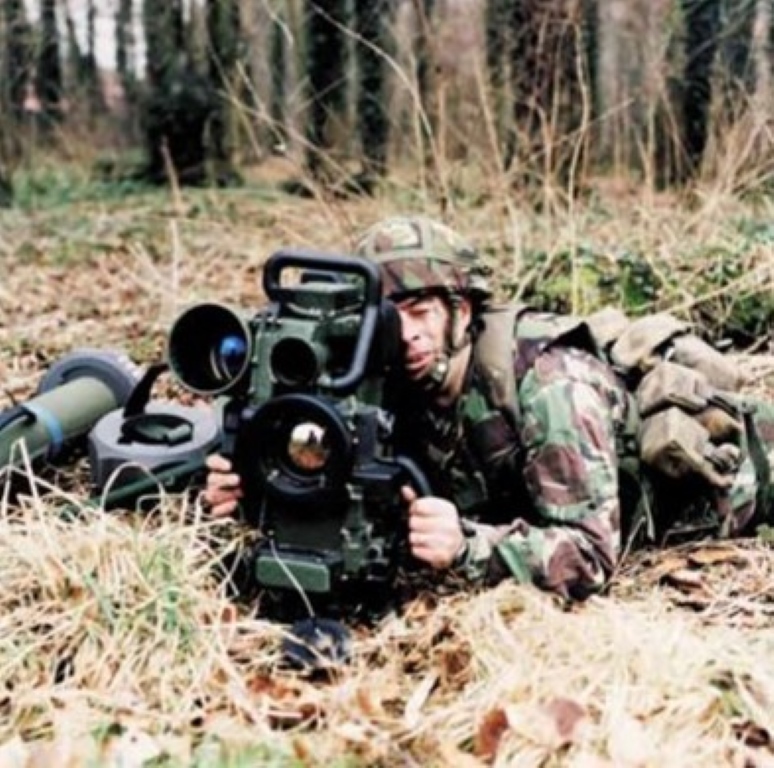
Despite the trials being hampered by the UK Foot and Mouth outbreak and 9/11 attacks in January 2003, the winner was announced;
The Minister of State, Ministry of Defence (Mr. Adam Ingram): The Ministry of Defence has selected the JAVELIN weapon system, produced by a joint venture of Raytheon and Lockheed Martin, as the preferred solution to the requirement for a new Light Forces’ Anti-Tank Guided Weapon (LF ATGW). This follows a rigorous and comprehensive assessment phase, which included comparative live-firing trials between JAVELIN and the SPIKE system (offered by Rafael and MBDA). Taking all of these factors into account, JAVELIN provides the best overall solution to our LF ATGW requirement in terms of risk, affordabilty, operational effectiveness and value for money.
JAVELIN, which is already in service with the United States Army, will provide the British Army with a significantly improved capability when it replaces the existing MILAN system. The weapon system is highly manoeuvrable, man-portable and is capable of destroying the most advanced tanks and armoured vehicles at ranges up to 2.5 km.
The contract, subject to satisfactory conclusion of negotiations, will be placed shortly. It will be worth over £300 million and is expected to create or sustain over 300 jobs across the United Kingdom in a diverse range of manufacturing companies.
A few modifications were made before the standard Javelin entered service with the UK.
A tripod was added to provide an option for a more stable firing platform, especially for extended surveillance using the extremely capable sighting system.
And that was the second major improvement, the sighting system was improved from the basic system
The history of Javelin goes back to the DARPA Tank Breaker programme in the early seventies
Beginning in the 1970s, DARPA began the Tank Breaker program in response to deficiencies identified by the U.S. Army and U.S. Marine Corps in their existing infantry anti-tank weapon. The Army evaluated two Tank Breaker designs by industry participants against alternatives in a shoot-off conducted in 1987-1988. The results led to selection of the Texas Instruments (later Raytheon) solution to the tank warfare challenge. Department of Defense officials approved it for full-scale development in 1989 under the Army’s Advanced Anti-armor Weapon System-Medium (AAWS-M) program. The Army later renamed the weapon Javelin, which entered full-scale production in 1997. It was the world’s first medium-range, one-man-portable, fire-and-forget anti-tank weapon system.
Like most of these projects, there is a complicated timeline.
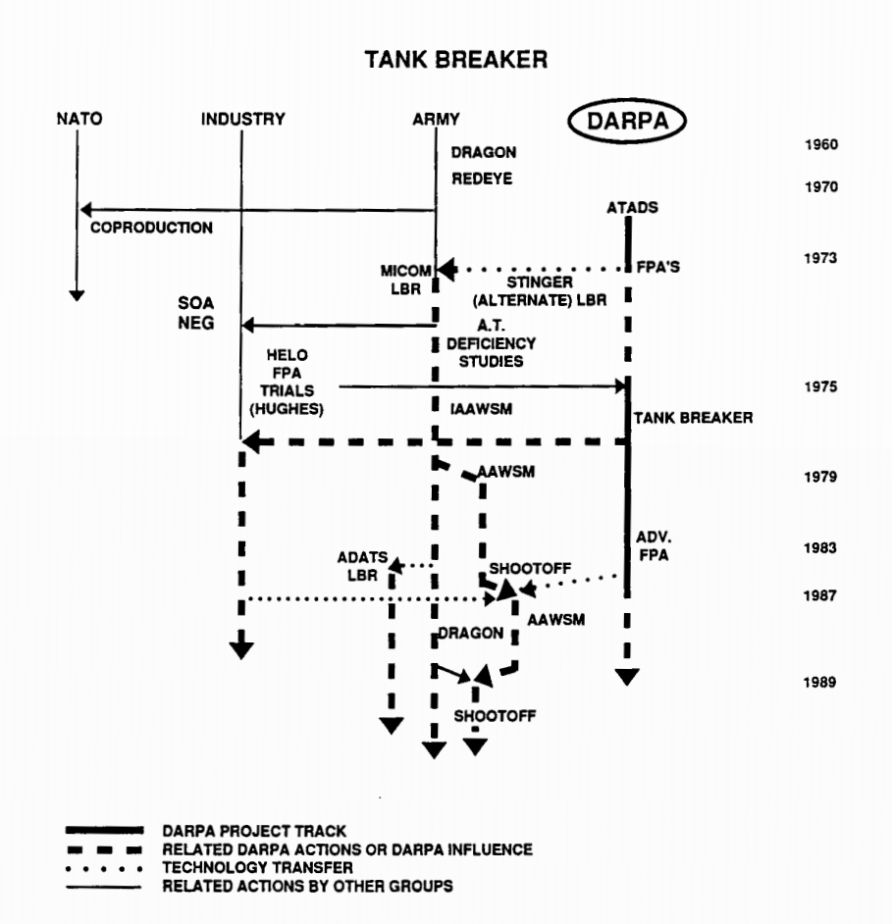
Captive seeker trials were conducted on both designs in the early eighties, about the same time as TRIGAT was in the concept stage.
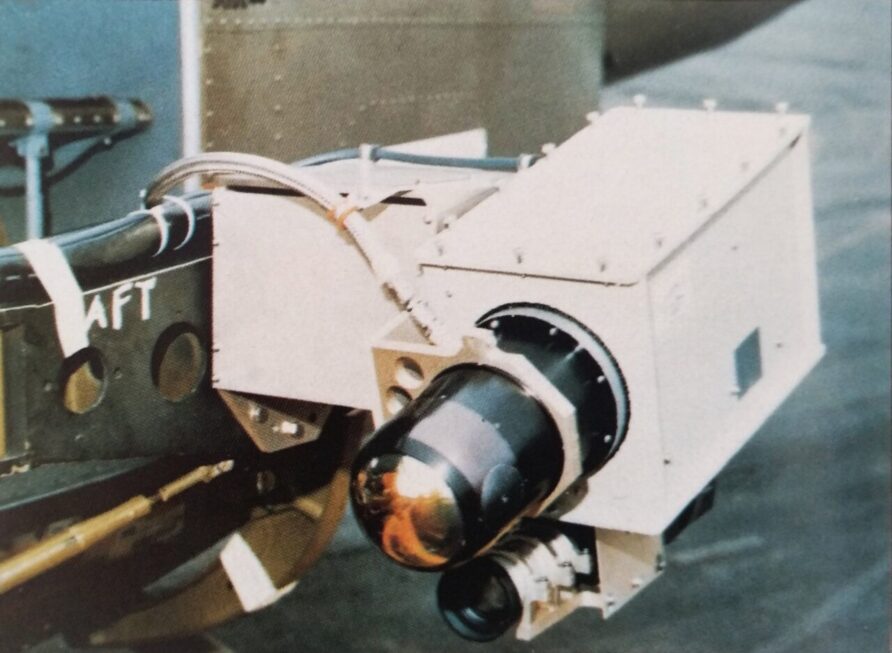
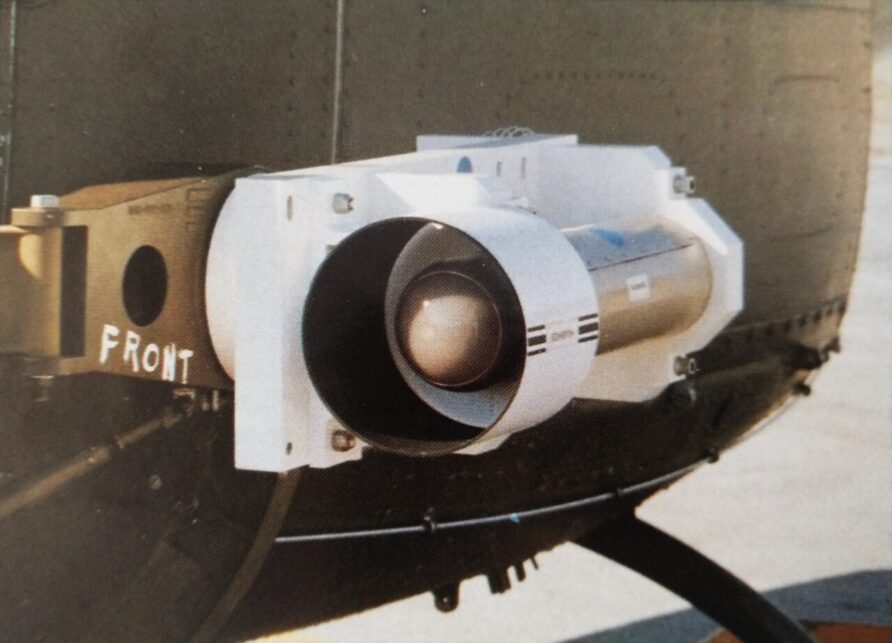
The Texas Instruments design won.
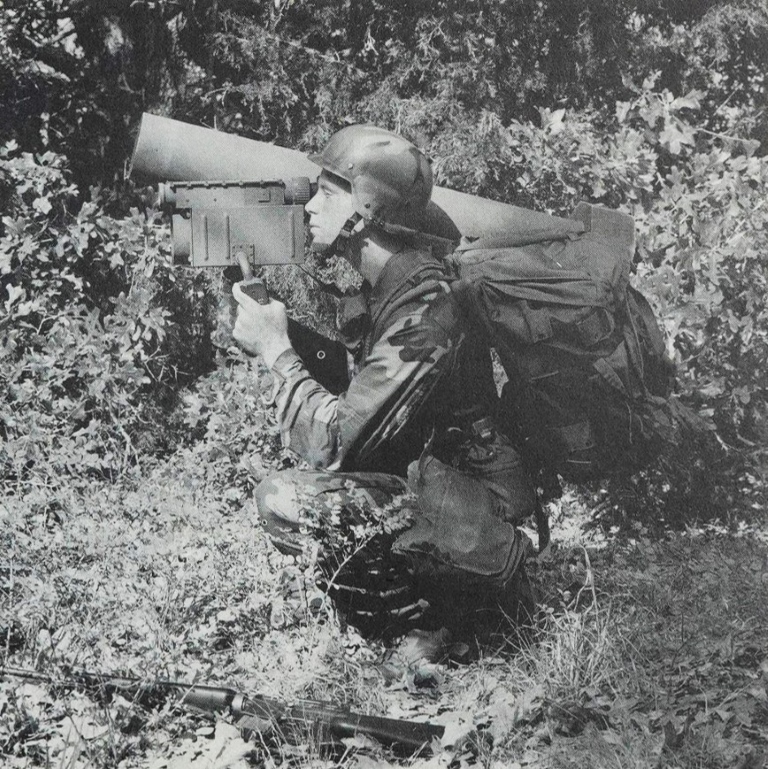
Eventually, through a period of industry convergence, the Javelin Joint Venture (JJV) was formed between Lockheed Martin and Raytheon.
Raytheon leads the joint venture and is responsible for system engineering and management support and production of the Command Launch Unit (CLU), missile guidance and system software. Lockheed Martin provides missile engineering and production support and assembles the missile all-up rounds.
Production started in 1994 and the first US Army units received their Javelin systems in June 1996.
Back with the UK.
Javelin entered service with the 16 Air Assault Brigade and 3 Commando Brigade in July 2005, four months ahead of schedule.
The initial order was primarily for 16 Air Assault Brigade and 3 Commando Brigade but in 2004, an additional £100 million order was placed for Javelin systems to equip Armoured Infantry (AI) and Formation Reconnaissance (FR) forces.
The total of these initial purchases was for approximately 9,000 missiles and 800 Command and Launch Units.
It was at this point that the initial intent was to study a longer-range weapon to replace the now out-of-service Swingfire.
Dismounted Javelin teams would have to do.
Lord Bach, again;
Javelin is already in service with the US Army and has proved its worth in recent operations in Iraq. It can be moved quickly around the battlefield but also has enough power to take out the most heavily protected tanks and armoured vehicles. We agreed a contract to provide the weapon to 16 Air Assault Brigade, 3 Commando Brigade and the Mechanised Infantry last year and have now agreed an additional purchase for other infantry and reconnaissance units, ensuring they are equipped with the very best weaponry available. It took less than a year to go from formulating the requirement to signing the contract – a contract which promises to deliver an exceptional combination of capability and value-for-money. This is a prime example of the benefits that SMART acquisition can bring. I am delighted the purchase will help to sustain some 200 jobs around the UK.
Another order for Javelin was placed in 2009 for an additional 1,300 missiles.
Javelin saw extensive use in Afghanistan.
It would also be impossible not to include this video!
A 2010 Written Question revealed the quantity and cost of Javelin missiles used in Afghanistan.
| Mortar | |||||
| Javelin( 1) | GMLRS( 1, 2) | 81mm | 60mm( 1) | 51mm | |
| 2008 | |||||
| December | 70 | 50 | 8300 | – | – |
| 2009 | |||||
| January | 80 | 40 | 21200 | 500 | – |
| February | 55 | 25 | 18100 | 100 | – |
| March | 35 | 45 | 17700 | 1000 | – |
| April | 35 | 60 | 6800 | – | – |
| May | 50 | 45 | 11200 | 200 | – |
| June | 30 | 45 | 14000 | 200 | 300 |
| July | 50 | 20 | 7900 | 100 | – |
| August | 70 | 40 | 6800 | 300 | – |
| September | 15 | 20 | 7800 | 300 | 200 |
| October | 55 | 15 | 11000 | – | 300 |
| November | 35 | 5 | 14800 | 800 | – |
All figures were rounded to the nearest five in the case of Javelin and GMLRS and 100 for mortar rounds.
The approximate current cost per Guided Multiple Launch Rocket is £68,000.
The Javelin missiles fired in the last 12 months have been procured under two different contracts. The average cost of each missile would have been approximately £49,000.
The cost of 51mm mortars ranges from approximately £80 to approximately £160 depending on the variant fired. The cost of 60mm mortars ranges from approximately £185 to approximately £640 depending on the variant fired. We do not hold data for the expenditure of 60mm mortars in all months. The cost of 81mm mortars ranges from approximately £190 to approximately £890 depending on the variant fired.
In 2016, Raytheon announced a successful series of test firings in the vehicle-launched role;
The Javelin™ Joint Venture team, a partnership of Raytheon Company (NYSE: RTN) and Lockheed Martin (NYSE: LMT), successfully demonstrated Javelin’s ability to engage targets beyond its current 2.5 kilometer range requirement during a series of ground vehicle launch tests. The five tests were conducted for the U.K. Army at the Salisbury Plain Training Area in Wiltshire, England. During the U.K. Army-sponsored tests, the Javelin missiles were mounted on a Spartan armoured fighting vehicle and fired via the Kongsberg M151 Remote Weapon Station. Each missile flew between 1.2 and 4.3 kilometers, hitting the stationary ground target in each test. “Javelin’s effectiveness in this demonstration enables mounted infantry to confidently engage targets at ranges that surpass other weapons in this class,” said John Halvey, Javelin Joint Venture president at Raytheon Missile Systems. “This range, coupled with vehicle integration, enhances overmatch for mounted infantry units.” The live-fire tests confirm Javelin’s greater than 94-percent reliability rate and demonstrate Javelin’s capability to engage targets from increased standoff distances on various platforms.
“These successful ground tests validate Javelin’s long-range engagement capability,” said Rich Benton, Javelin Joint Venture vice president and Javelin program director at Lockheed Martin Missiles and Fire Control. “These tests also reinforce Javelin’s maturity and readiness for deployment from vehicles and other platforms.
Kongsberg, the supplier of the remote weapon system used in the test also confirmed several additional details;
KONGSBERG recently delivered a fully configurable, dual-weapon system that includes a 12,7mm or 40mm AGL as the main weapon and an integrated 7,62mm or Javelin as the coaxial weapon. The system design enables configurability on a mission to mission basis for maximum flexibility.
Supporting the growing interest in an integrated ATGM capability, the UK’s Armoured Trials and Development Unit (ATDU) successfully conducted a Javelin missile trial leveraging a fully integrated missile on the M151 PROTECTOR RWS. The firing trials were also supported by KONGSBERG and the Javelin Joint Venture (JJV) program.
In all, ATDU fired five Javelin missiles from the M151 PROTECTOR whilst mounted to UK MOD armoured vehicle known as a Spartan. The Firing Trials included the firing of three Block 0 missiles at ranges of 1500, 2500, and 3200 metres and two Block 1 missiles at ranges of 3500 and 4300 metres. All five missiles struck the designated targets, including the engagement that was defined at 4300 metres – one of the longest Javelin engagement distances trialed to date.
The most interesting of these was the 4.3 km outer range of the trial.
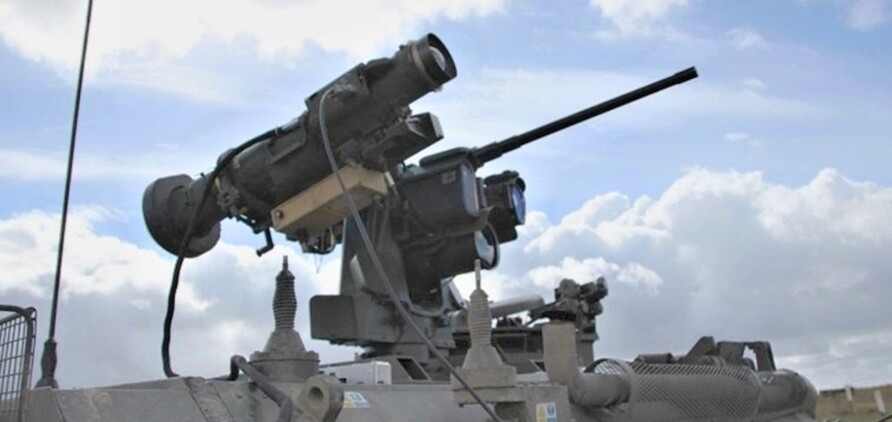
With the Russian invasion of Ukraine in early 2022, the UK began supplying various weapons to the armed forces of Ukraine, notably NLAW, but also by April 2022, 218 Javelin ATGW.
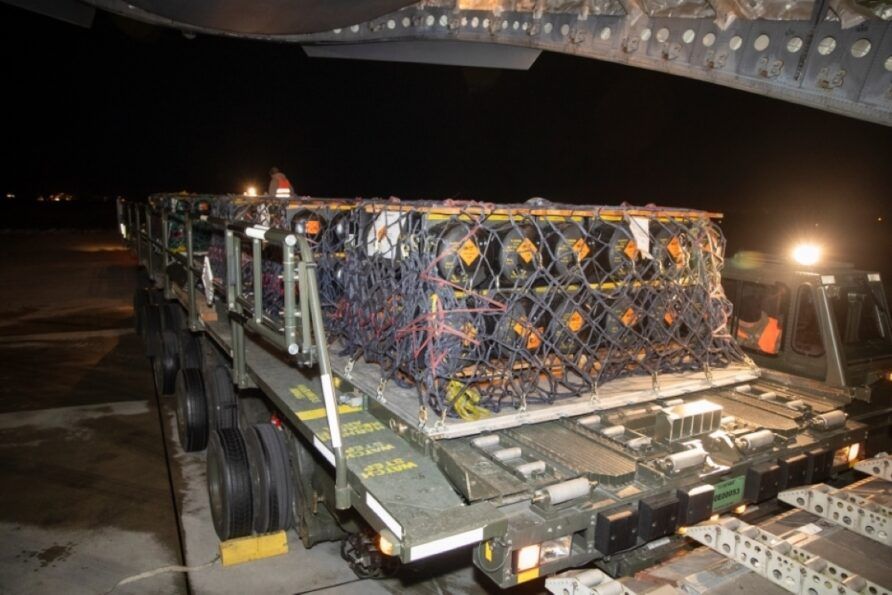
In August 2022, the DCSA released a notification of sale approval to the MoD for Lightweight Command and Launch Units
WASHINGTON, August 1, 2022 – The State Department has made a determination approving a possible Foreign Military Sale to the Government of the United Kingdom of Javelin Lightweight Command Launch Units (LWCLUs) for an estimated cost of $300 million. The Defense Security Cooperation Agency delivered the required certification notifying Congress of this possible sale today.
The Government of the United Kingdom has requested to buy five hundred thirteen (513) Javelin Lightweight Command Launch Units (LWCLUs). Also included are Javelin LWCLU Basic Skills Trainers (BSTs); Javelin Outdoor Trainers (JOTs); Javelin Vehicle Launcher Electronics (JVL-Es); Javelin LWCLU Train the Trainer Package; Lifecycle Support; System Integration and Check out (SICO); Javelin Operator Manual; Technical Assistance (TAGM); and other related elements of logistical and program support. The total estimated program cost is $300 million
The MoD has yet (October 2023) to release details of any order placed.
A later series of releases from the MoD clarified that it had supplied 6,900 NLAW and 200 Javelin to Ukraine.
Reporting has since indicated that Lightweight CLU’s would be obtained as part of a Capability Sustainment Programme (CSP) from 2025, the same year the G model will enter production and the projected out-of-service date of existing Javelin equipment.
The Close Combat Anti-Armour Weapon (CCAAW), part of the Battle Group Organic Anti-Armour (BGOAA) requirement, will eventually replace the Javelin.
In a written response to the Defence Select Committee report, ‘Ready for War’, in April 2024, the MoD stated
To date investments include support to deliver a large purchase of 155mm munitions, building storm shadow stockpiles, supply chain mapping, wargaming, enhancements to a range of critical infrastructure, and medical stockpiles.
In addition to these uplifts, we have placed almost £1Bn in contracts to replenish UK stocks of equipment and munitions already granted to Ukraine. Contracts have been placed to replenish UK stockpiles include Next Generation Light Anti-Tank Weapons; Starstreak High Velocity Missiles; Lightweight Multirole Missiles; Javelin missiles; Brimstone missiles; 155mm artillery rounds; and 5.56mm rifle rounds
It was reported in 2024 that the MoD had confirmed Lightweight Control Launch Unit deliveries for the UK would commence in 2026, although numbers were not specifically confirmed, reporting indicated approximately 500. Additional missiles, the F model, were also reported to start UK service in 2027.
The UK first firing of a Javelin with the Lightweight CLU took place in 2024.
Before reading on, would you mind if I brought this to your attention?
Think Defence is a hobby, a serious hobby, but a hobby nonetheless.
I want to avoid charging for content, but hosting fees, software subscriptions and other services add up, so to help me keep the show on the road, I ask that you support the site in any way you can. It is hugely appreciated.
Advertising
You might see Google adverts depending on where you are on the site, please click one if it interests you. I know they can be annoying, but they are the one thing that returns the most.
Make a Donation
Donations can be made at a third-party site called Ko_fi.

Think Defence Merch
Everything from a Brimstone sticker to a Bailey Bridge duvet cover, pop over to the Think Defence Merchandise Store at Red Bubble.
Some might be marked as ‘mature content’ because it is a firearm!
Affiliate Links
Amazon and the occasional product link might appear in the content, you know the drill, I get a small cut if you go on to make a purchase
Javelin Anti-Tank Guided Weapon (ATGW) Capabilities
Javelin is a fire-and-forget man-portable anti-tank guided weapon comprising two main components, the missile itself and the Command Launch Unit (CLU)
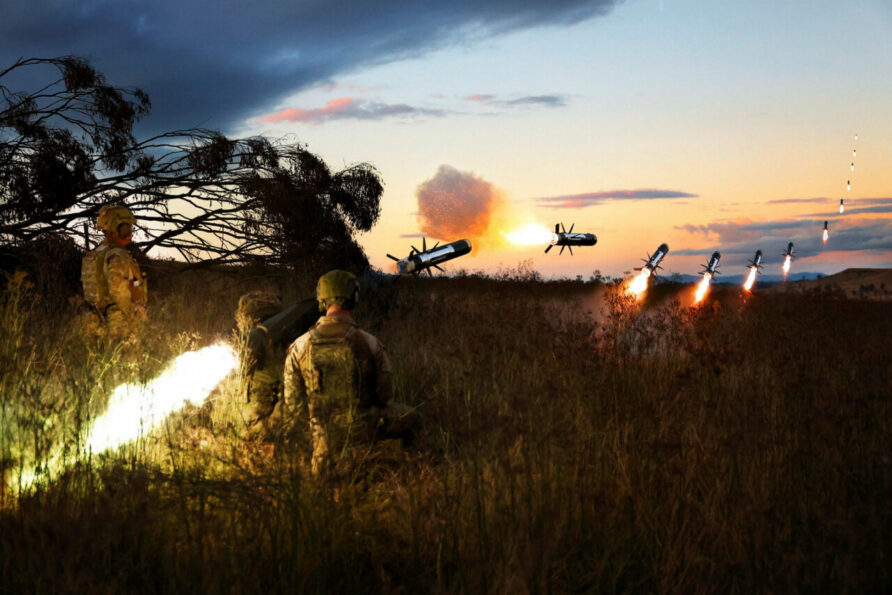
Javelin Missile
With a stated range of 2.5 km, the missile weighs 11.8 kg and is armed with a tandem-shaped charge warhead.
The tandem warhead has two charges; the precursor initiates explosive reactive armour and then the main warhead is initiated to penetrate armour underneath.
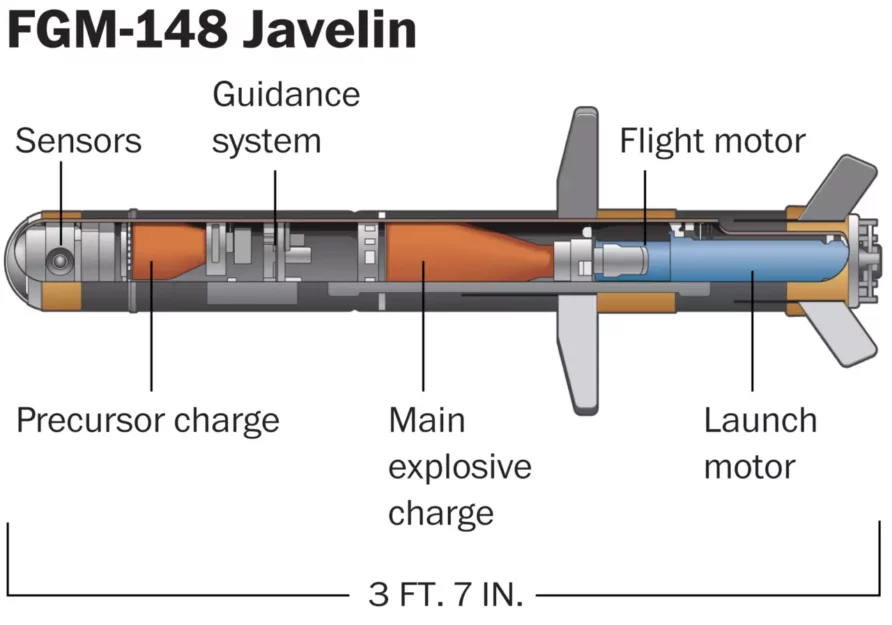
The missile is equipped with a lock-on before launch and an automated self-guidance system that uses an imaging infra-red sensor based on a 12um cadmium mercury telluride (CdHgTe) 64 x 64-pixel focal plane array.
The Javelin uses a soft launch system to reduce launch signatures and enable firing from confined spaces. The small launch motor ejects the missile clear of the tube and, when at a safe distance, ignites the propulsion motor.
A selectable flight profile allows the missile to engage directly or in a top attack mode.
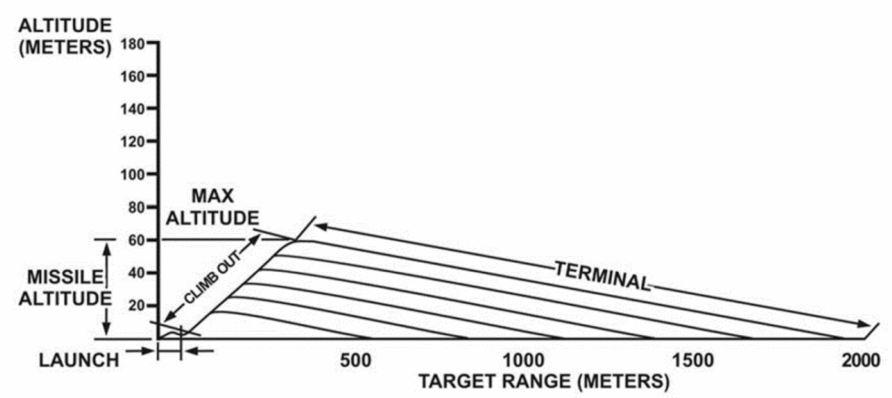
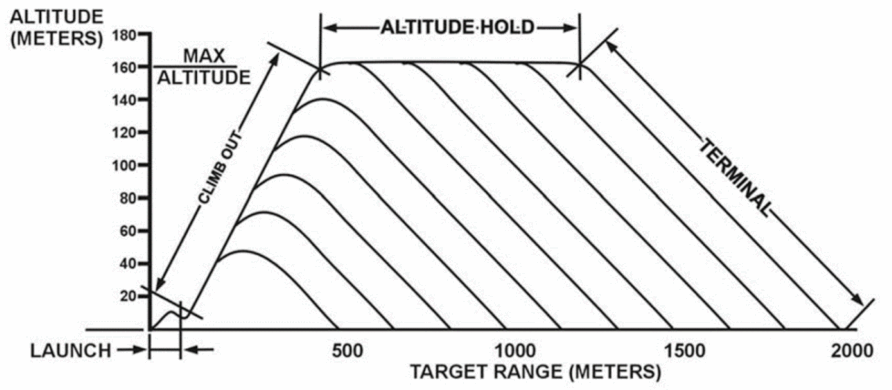
The missile is contained in a sealed Launch Tube Container which is discarded when fired.
The Javelin has been tested to 4,750m and fired from various weapon mounts and platforms.
Developments have also included a multipurpose warhead that is better suited to attacking non-armoured vehicle targets, as was common in Afghanistan.
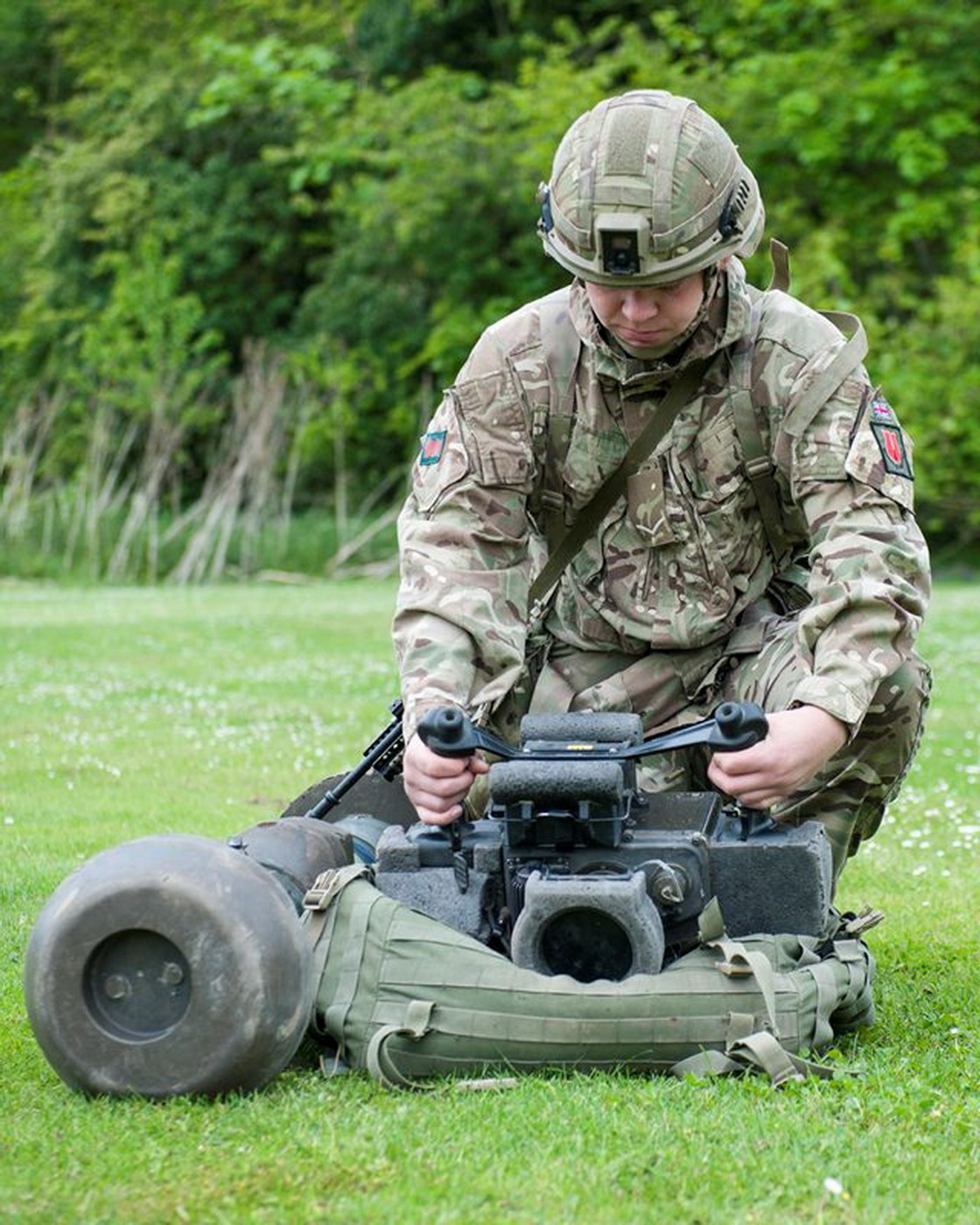
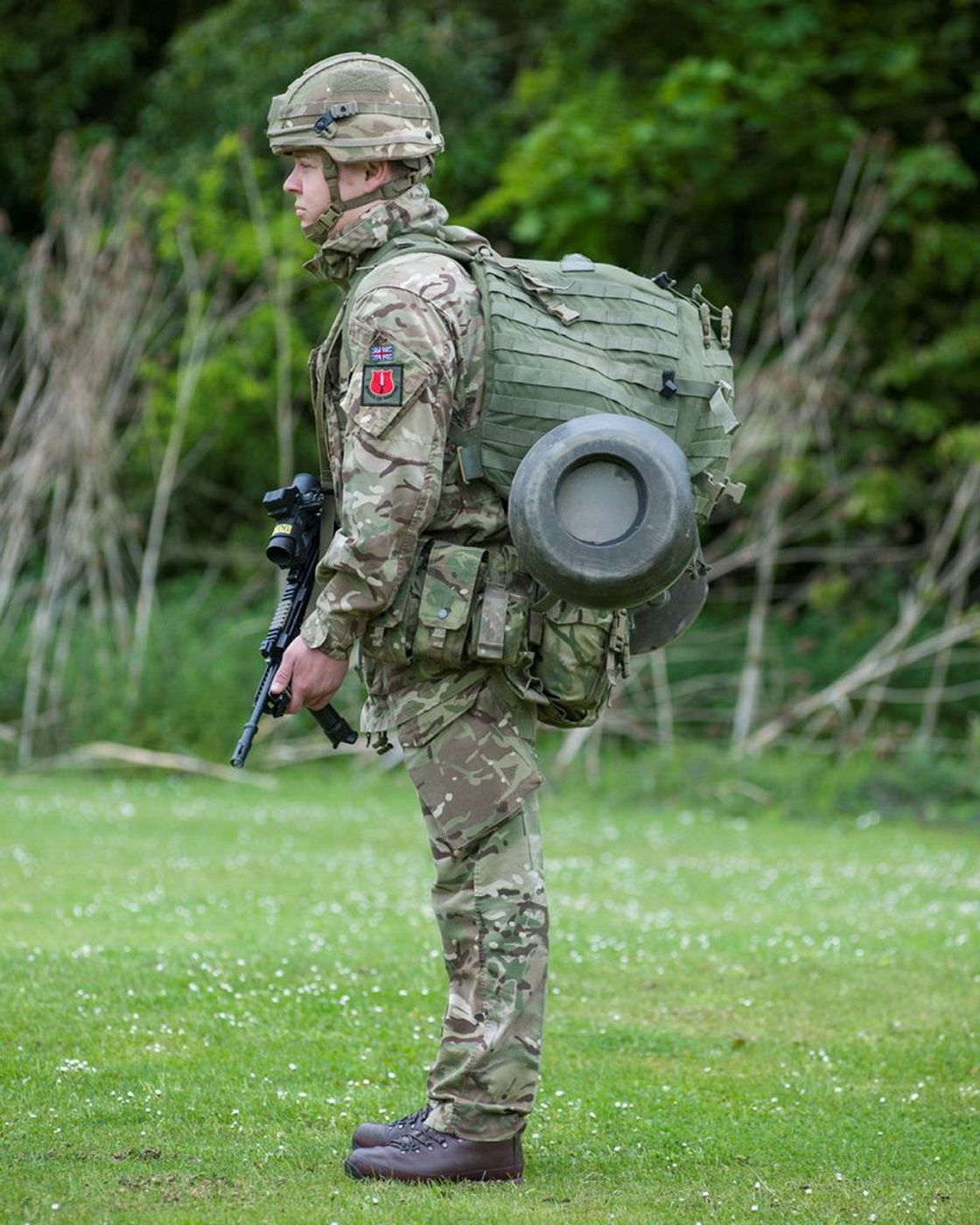
The UK has the FGM-148D Block 0 variant in service, those coming into service before FGM-148E (Block 1) in 2008. UK Javelins were delivered before 2006.
There has been some development to the basic missile and CLU since then.
Block 1 missiles were produced from 2006, with improvements including a shorter flight time and longer surveillance period.
Starting production in 2017, the FGM-148E incorporated the enhancements that were part of the Spiral 1 programme that started in 2014. Lower weight and cost were the main changes.
The FGM-148F version features a new multipurpose warhead (Multi-Purpose Warhead (MPWH)) to improve lethality against non-armoured targets and improvements in the CLU. The F model started production in 2020 and now all production is of this variant.
The latest version, FGM-148G, features a seeker that does not require cooling, a big improvement in usability and effectiveness. This model also features a new battery system and launch tube assembly.

Command Launch Unit (CLU)
The clip-on Command Launch Unit (CLU) weighs 6.4 kg and provides the passive target acquisition, fire control unit and integrated day and thermal imaging sight.
The UK javelin uses a DRS Technologies 2nd gen thermal imaging sight with x 4 and x 9 magnification optics. Target information is passed to the missile and whilst the gunner can observe and control the missile during flight, the missile is ‘fire and forget’ if needed.
A tripod assembly is also available for UK Javelin CLU’s
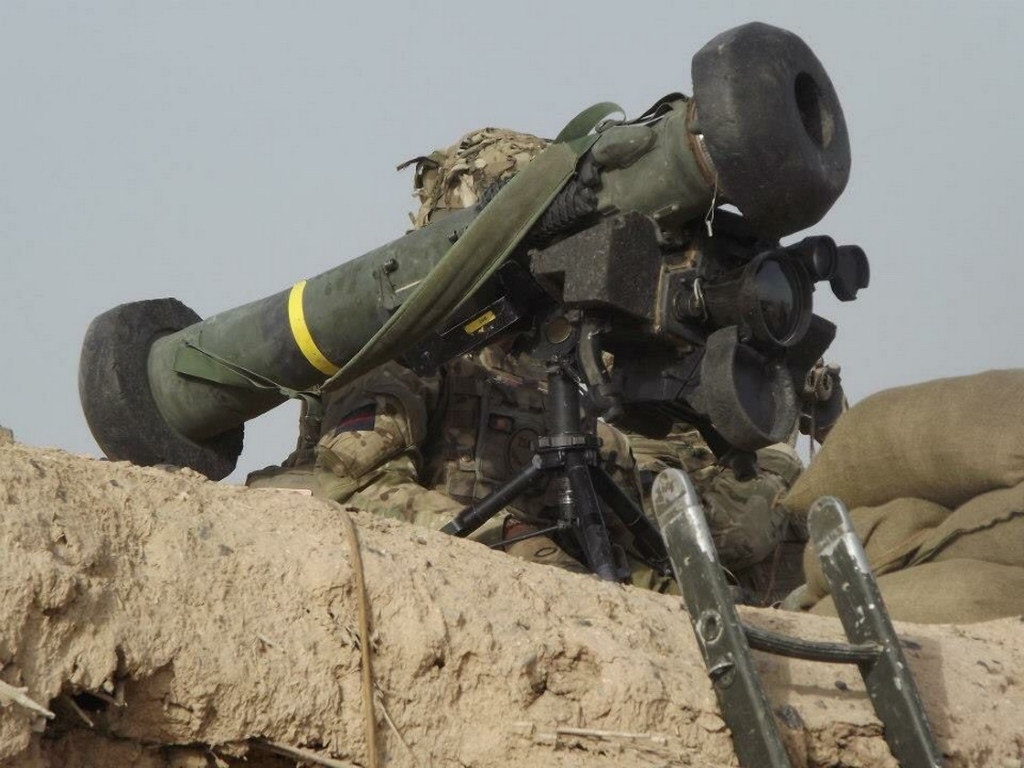
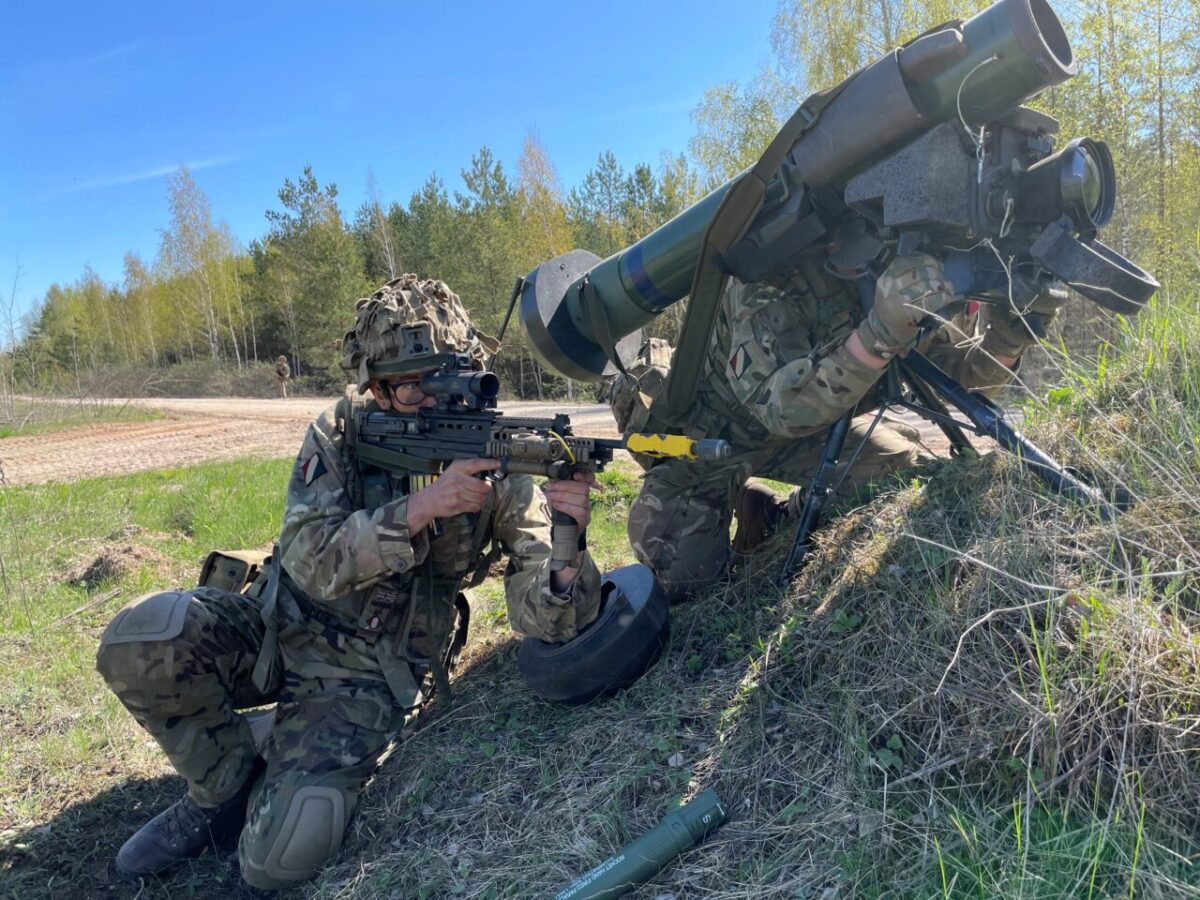
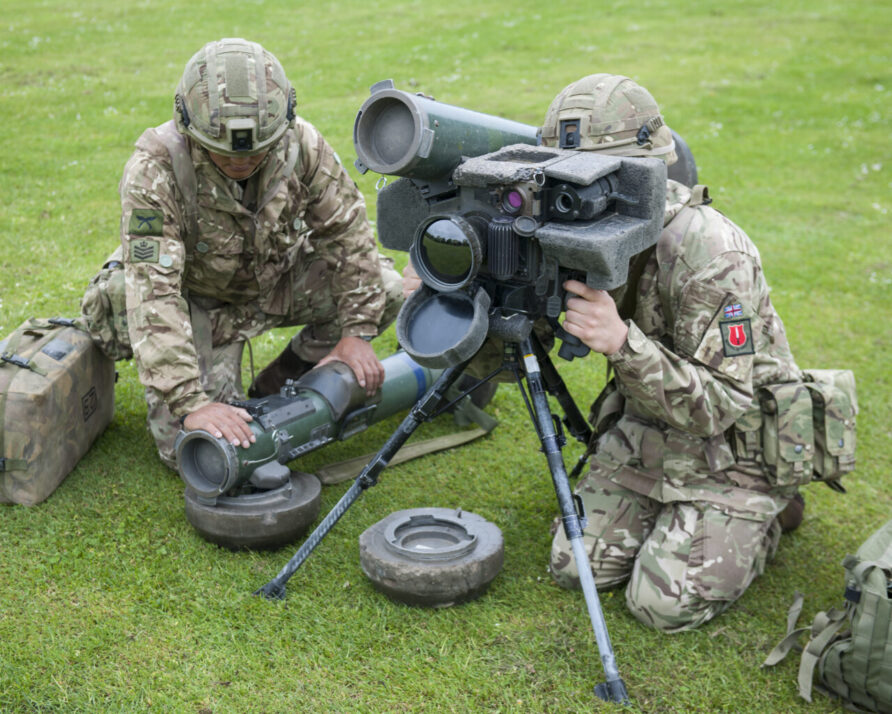
In numerous instances, the CLU is used as a standalone observation system.
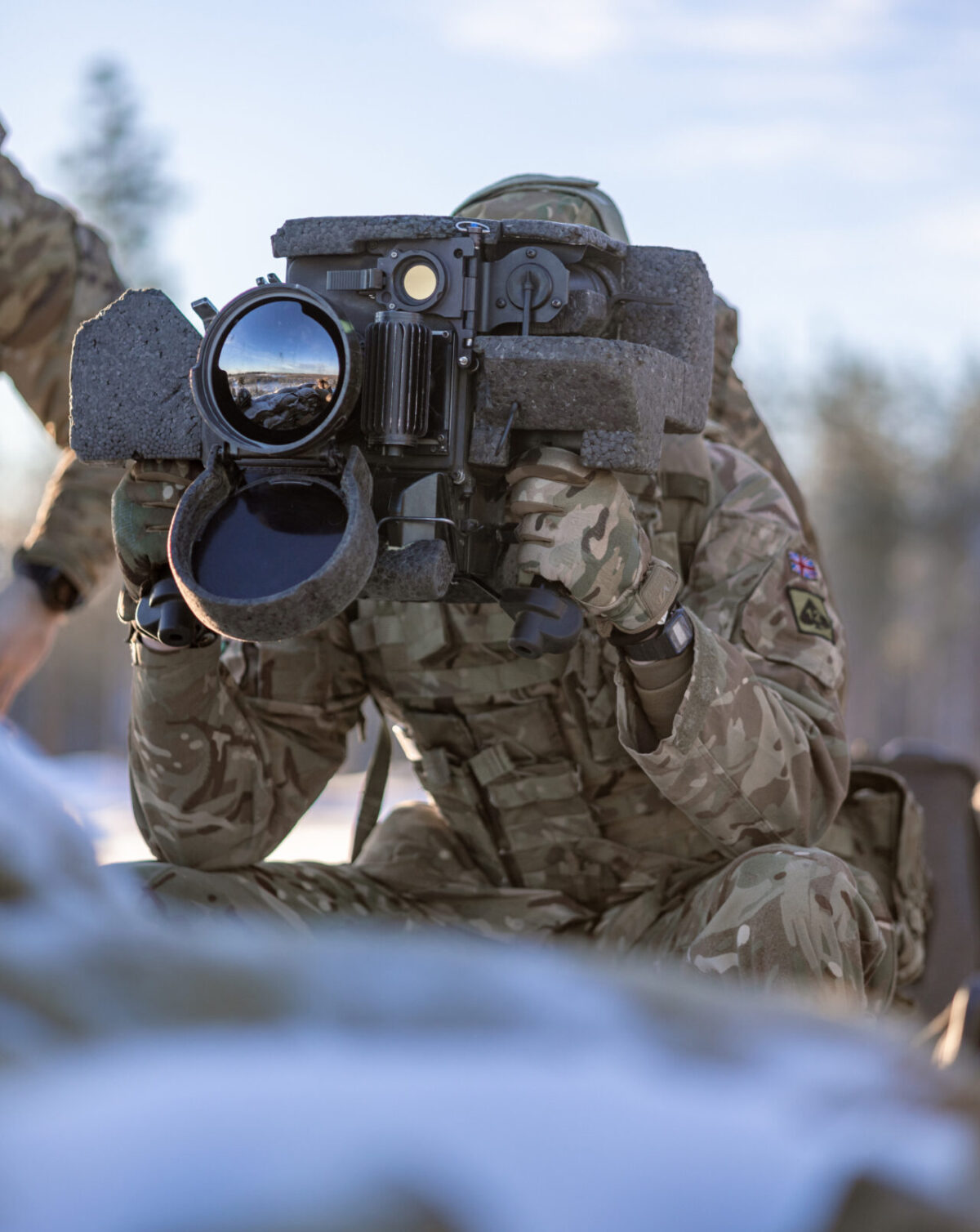
The US has developed a lightweight CLU that is 70% smaller, 40% lighter and with a 50% increase in battery life.
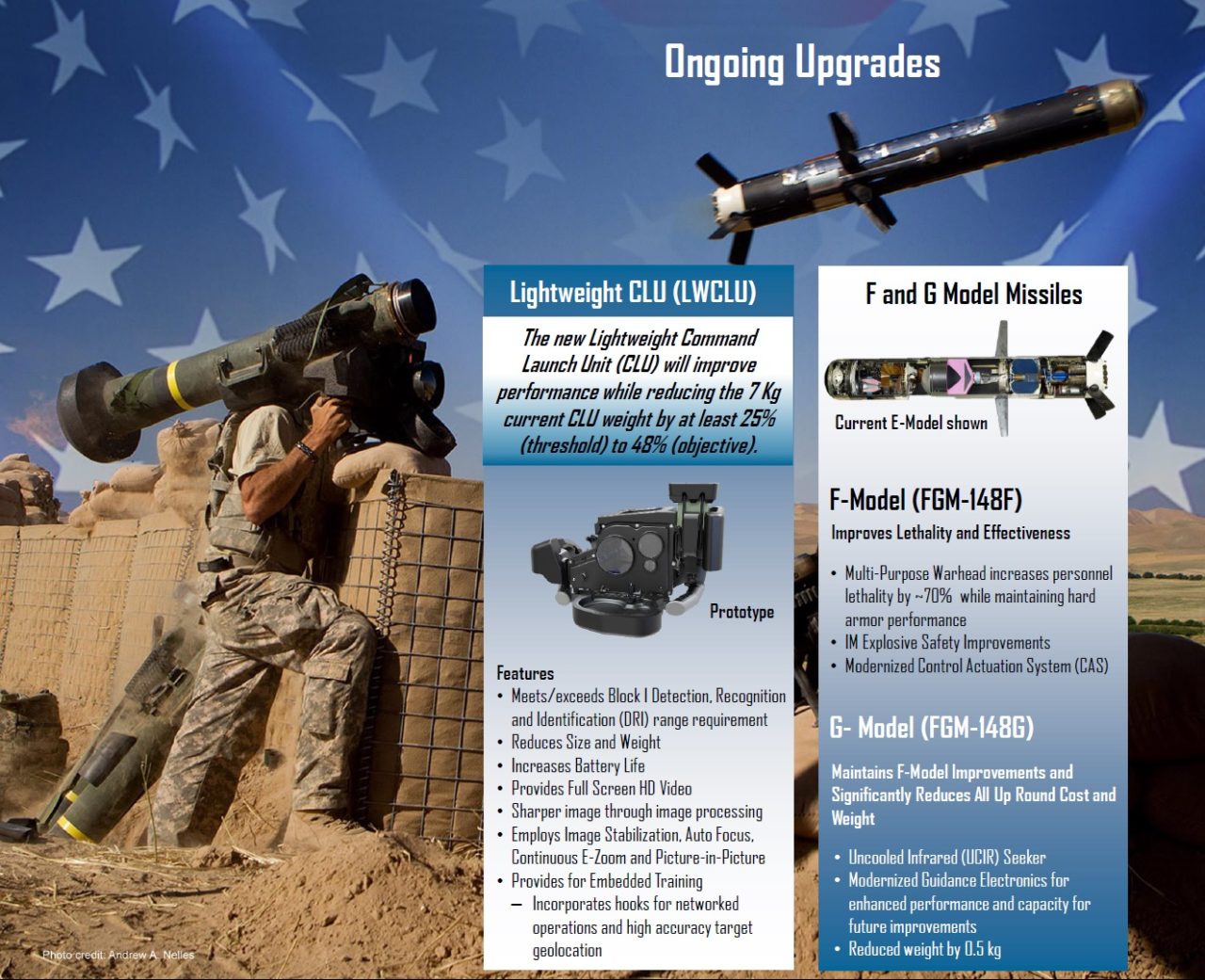
It also has a range of other improvements, GPS and network connectivity for example.
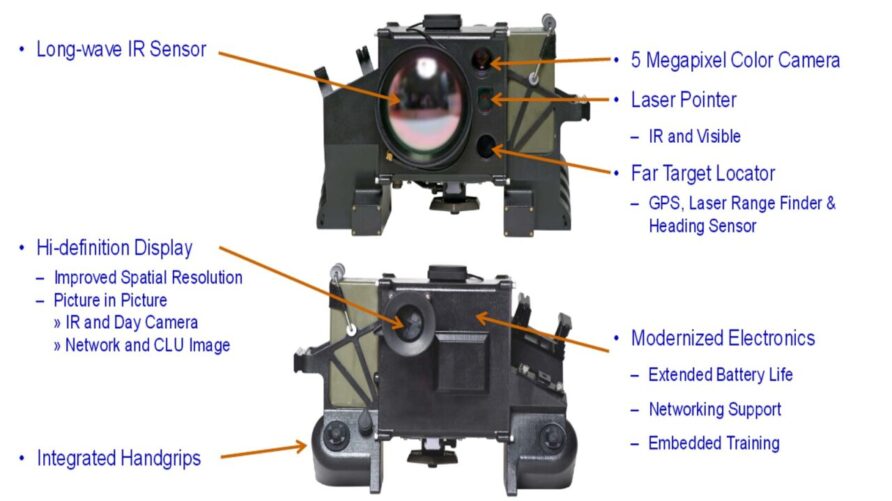
The autofocus and improved image clarity are reportedly excellent.
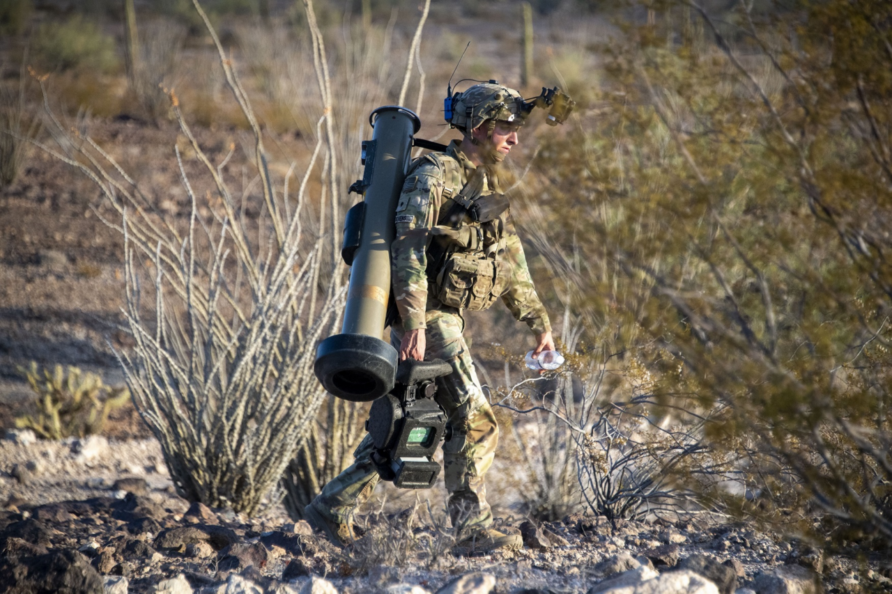
Change Status
| Change Date | Change Record |
| 26/04/2016 | Initial issue |
| 29/07/2021 | Refresh and format update |
| 11/11/2022 | Lightweight CLU request and additional information on Javelin history |
| 25/11/2023 | Additional Lightweight CLU information |
| 05/05/2024 | Minor updates |
Discover more from Think Defence
Subscribe to get the latest posts sent to your email.


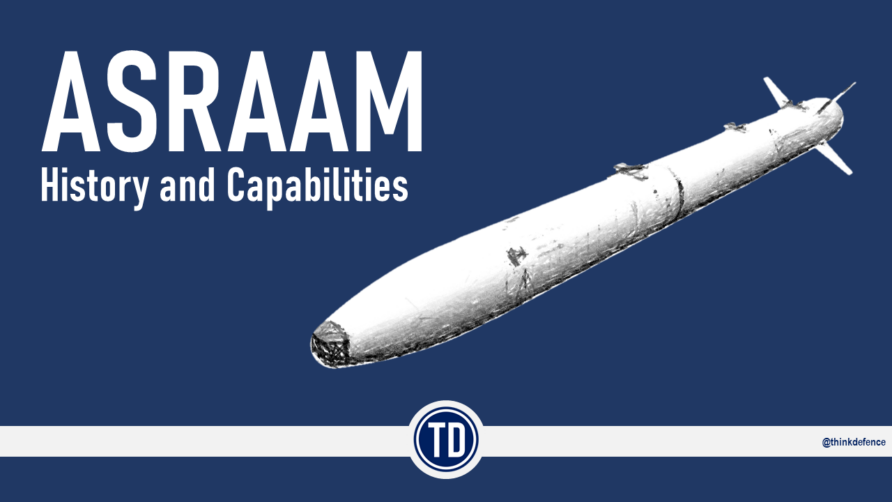
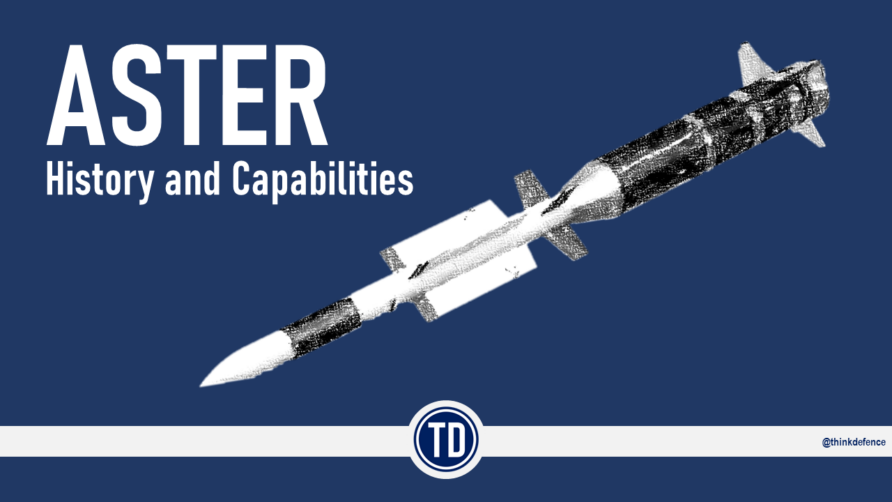

The description of Trigat MR’s laser beamriding is a bit misleading.
The missile attempts to follow the beam by correcting its course when it deviates off it, BUT the user does not need to aim at the target right away (and should not).
He can aim it at a place to which the tank will move by the time the missile arrives, or lead the tank, or aim above the tank – and only when the missile comes close to the target move the aim onto the target.
This way you might avoid triggering the laser warning receiver for valuable seconds (avoiding a two seconds quick obscuration by smoke).
A similar approach can be used with semi-active laser designation, for the same reason.
Interesting that the latest (not purchased) CLU has a 5 megapixel camera when the latest consumer mobiles come with one of 108
– depends on what the camera is used for; no point ‘gold plating’